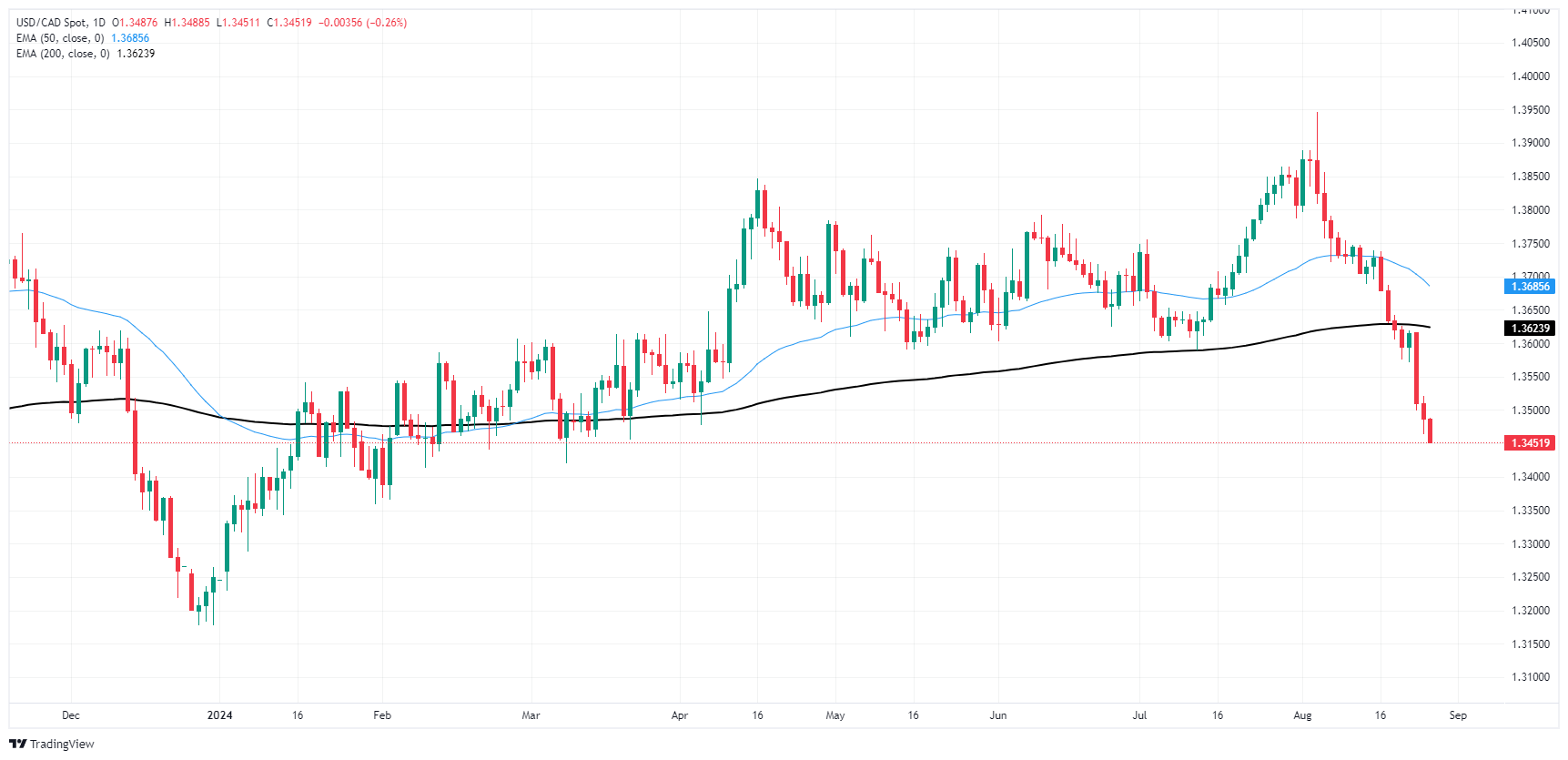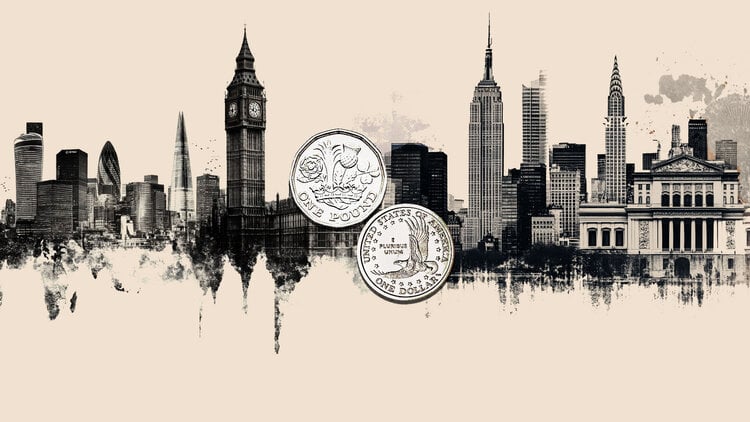- The Canadian dollar fell on Tuesday, but the US dollar fell faster.
- Canada remains data-light until Friday’s GDP release.
- Markets are bracing for Friday’s US PCE inflation figures.
The Canadian Dollar (CAD) traded with a broadly softer tone on Tuesday, retreating against most of its major currency pairs but still finding room to rise against the US Dollar (USD). The US Dollar wobbled across the board as we approached the mid-week, falling into the red and helping to send USD/CAD into its third straight day of decline.
Canada remains largely absent from the economic calendar this week until the second-quarter gross domestic product (GDP) update on Friday. Annualized second-quarter GDP is expected to edge down to 1.6% from 1.7%, but markets are likely to be fully focused on the U.S. Personal Consumption Expenditure (PCE) Price Index, due in the same time window.
Daily summary of market drivers
- Markets continue to sell the US Dollar as rate cut expectations remain high.
- The CAD continues to struggle to find its own momentum and remains at the mercy of broader market flows.
- The Federal Reserve’s dovish turn remains the topic of conversation.
- According to the CME’s FedWatch tool, rate markets are pricing in a greater than 35% chance of a 50bp rate cut on Sept. 18, with the rest expecting a quarter-point cut.
- Rate traders expect a total of 100 bps in cuts by year-end.
Canadian Dollar Price Forecast
Despite the uncertain tone of the Canadian Dollar (CAD) on Tuesday, a broadly weakened US Dollar has sent USD/CAD price action into the ground, extending a slide below 1.3500 and testing six-month lows near 1.3450. The pair has traded in the red on all but four of the past 17 consecutive trading days, falling 3.5% from early August highs just below 1.3950.
A one-sided bearish breakout in the USD/CAD chart action has seen bids fall straight through the 200-day exponential moving average (EMA) at 1.3628. Sidelined bulls are running out of room to find a foothold before momentum breaks the lower end of the early 2024 congestion zone between 1.3600 and 1.3400.
USD/CAD daily chart
Canadian Dollar FAQs
The key factors determining the Canadian dollar (CAD) are the level of interest rates set by the Bank of Canada (BoC), the price of oil, Canada’s main export, the health of its economy, inflation and the trade balance, which is the difference between the value of Canadian exports and its imports. Other factors include market sentiment, i.e. whether investors are betting on riskier assets (risk-on) or looking for safe assets (risk-off), with risk-on being positive for the CAD. As its largest trading partner, the health of the US economy is also a key factor influencing the Canadian dollar.
The Bank of Canada (BoC) exerts significant influence over the Canadian dollar by setting the level of interest rates that banks can lend to each other. This influences the level of interest rates for everyone. The BoC’s main objective is to keep inflation between 1% and 3% by adjusting interest rates up or down. Relatively high interest rates are generally positive for the CAD. The Bank of Canada can also use quantitative easing and tightening to influence credit conditions, with the former being negative for the CAD and the latter being positive for the CAD.
The price of oil is a key factor influencing the value of the Canadian dollar. Oil is Canada’s largest export, so the price of oil tends to have an immediate impact on the value of the CAD. Generally, if the price of oil rises, the CAD rises as well, as aggregate demand for the currency increases. The opposite occurs if the price of oil falls. Higher oil prices also tend to lead to a higher probability of a positive trade balance, which also supports the CAD.
Although inflation has traditionally always been considered a negative factor for a currency, as it reduces the value of money, the opposite has actually occurred in modern times, with the relaxation of cross-border capital controls. Higher inflation typically leads central banks to raise interest rates, which attracts more capital inflows from global investors looking for a lucrative place to store their money. This increases demand for the local currency, which in Canada’s case is the Canadian dollar.
The released macroeconomic data measures the health of the economy and can have an impact on the Canadian Dollar. Indicators such as GDP, manufacturing and services PMIs, employment and consumer confidence surveys can influence the direction of the CAD. A strong economy is good for the Canadian Dollar. Not only does it attract more foreign investment, but it can encourage the Bank of Canada to raise interest rates, which translates into a stronger currency. However, if the economic data is weak, the CAD is likely to fall.
Source: Fx Street
I am Joshua Winder, a senior-level journalist and editor at World Stock Market. I specialize in covering news related to the stock market and economic trends. With more than 8 years of experience in this field, I have become an expert in financial reporting.







